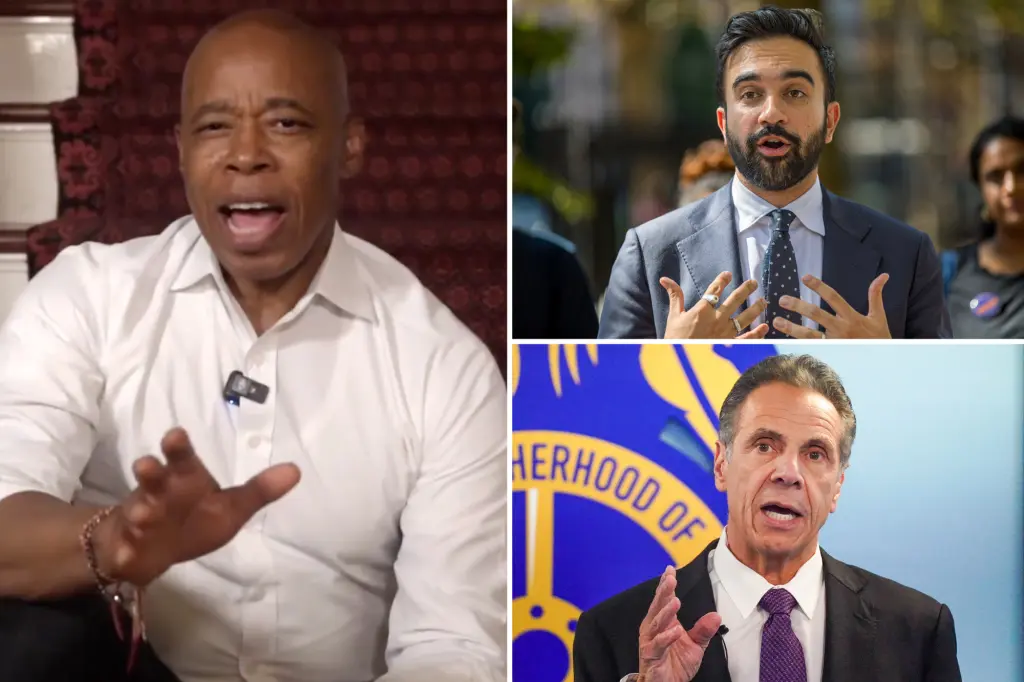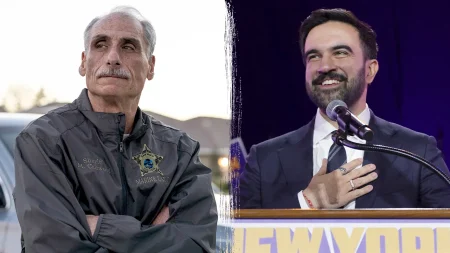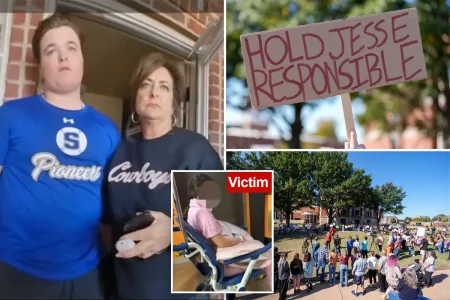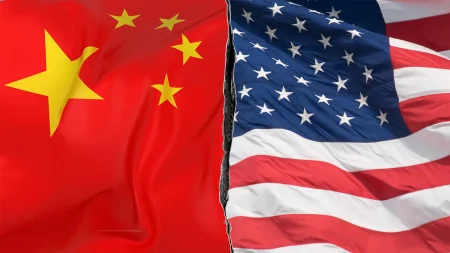Eric Adams Steps Down from Mayoral Race, Reshaping New York’s Political Landscape
In a surprising turn of events that has reshaped New York City’s mayoral race, Eric Adams announced his withdrawal from the campaign on Sunday. This decision, while difficult, was characterized by many, including former Governor Andrew Cuomo, as putting “the well-being of New York City ahead of personal ambition.” Adams’ exit comes amid growing pressure to consolidate opposition against Democratic nominee Zohran Mamdani, who currently leads in the polls. The mayor’s withdrawal has significant implications for the remaining candidates, particularly elevating Cuomo’s position as Mamdani’s most formidable challenger. Although Adams will technically remain on the November ballot, his active campaign has ended, creating a new dynamic in this high-stakes election that will determine the future leadership of America’s largest city.
The political reactions to Adams’ decision have been swift and varied across the political spectrum. Cuomo, who is now mounting his own independent bid for City Hall after resigning as governor in 2021 amid various scandals, praised Adams for his selflessness while warning against “destructive extremist forces that would devastate our city.” Meanwhile, Mamdani attributed Adams’ exit to pressure from “Donald Trump and his billionaire donors” while asserting that it wouldn’t change the election’s outcome. The Democratic nominee took the opportunity to criticize both Adams and Cuomo, describing them as “disgraced, corrupt politicians” and promising to “turn the page on the politics of big money and small ideas.” Governor Kathy Hochul, who received advance notice from Adams about his decision, took a more conciliatory tone, highlighting their shared accomplishments and noting that Adams “leaves New York City better than he inherited it.”
The reconfigured race now features Mamdani as the front-runner, with Cuomo and Republican nominee Curtis Sliwa competing to become the primary alternative. Sliwa’s campaign swiftly positioned him as “the only candidate who can defeat Mamdani,” touting their “unmatched” resources and solutions “to help working people afford to stay in New York City and feel safe.” Staten Island Republican Representative Nicole Malliotakis commended Adams for “putting the city first” and emphasized the importance of consolidating support against what she described as Mamdani’s “destructive and radical socialist takeover.” The ideological battle lines are clearly drawn, with Mamdani representing progressive policies that have caused concern in some political circles, while his opponents position themselves as more moderate alternatives focused on public safety and economic stability.
Not everyone viewed Adams’ withdrawal as timely or sufficient. Republican City Councilwoman Joann Ariola criticized the mayor for not stepping aside sooner, saying, “Once it became clear that Mayor Adams was not going to be the Democratic candidate, he should have stopped campaigning.” She expressed frustration over “months of confusion” caused by Adams “stubbornly trying to stay in the race despite everything screaming that he should withdraw.” This sentiment reflects a broader criticism that Adams’ delayed decision may have complicated efforts to organize effective opposition to Mamdani. The timing of his withdrawal, coming relatively late in the election cycle, raises questions about whether it will significantly impact voter behavior or merely formalize what polls had already indicated—that Adams’ path to victory had become increasingly narrow.
Political analysts remain divided on how much Adams’ exit will actually reshape the race. Basil Smikle, a veteran political strategist who has worked with Hillary Clinton and former Mayor Mike Bloomberg, questioned the significance of the move “at this late stage and given Adams’ poll numbers.” He noted that while it “does clear the field for the head-to-head matchup that Cuomo wanted,” its overall impact on the anti-Mamdani effort remains uncertain. Similarly, Republican consultant Bill O’Reilly suggested the withdrawal helps “only marginally” in stopping Mamdani, predicting that “some of the Adams vote will go to Sliwa and some will go to Cuomo, but the numbers are small.” O’Reilly expressed skepticism about defeating Mamdani without consolidating to a two-person race, which appears unlikely with multiple candidates remaining on the ballot.
The November election now stands as a critical moment for New York City’s future, with starkly different visions competing for voters’ support. Mamdani continues to present himself as the candidate of progressive change who will deliver “a government every New Yorker can be proud of.” Cuomo positions himself as an experienced leader who can protect the city from extremism, while Sliwa emphasizes public safety and affordability. Adams’ withdrawal has clarified the choices facing voters but hasn’t necessarily simplified them. As New Yorkers prepare to cast their ballots, they’ll be weighing competing concerns about public safety, economic opportunity, and governmental integrity against the backdrop of national political polarization. The outcome will not only determine who occupies Gracie Mansion but also signal which direction voters want for a city still recovering from pandemic disruptions and facing significant challenges in housing, crime, and quality of life.











